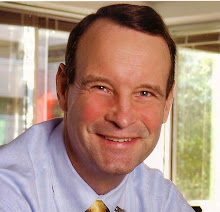INCREASING RANGE OF MOTION FOR SENIORS MEANS MORE DISTANCE
Bob Forman
Certified Golf Fitness Instructor
One of the most common complaints from older golfers is that they can’t seem to be able to hit the ball as far as they used to. For some, this frustration often leads to less playing time or giving up the game entirely.
If the senior tees are not an option, here is a factor to consider when evaluating your game. Range of motion or the degree of movement one has for a particular body part, can play a vital role in the golfer’s ability to obtain distance on their shots. In particular, is the ability to get the club back during the backswing in order to produce sufficient clubhead speed at impact.
One of the preventable consequences of aging is a loss of flexibility and range of motion. This often is the result of a more sedentary lifestyle and/or the absence of a stretching routine. The stretching routine probably being the more significant of the two as even individuals who are active will lose their ability to move body parts, as stronger muscles tend to become tighter muscles. A consistent flexibility program will offset the tightness that develops through activity or the lack thereof.
As far as the backswing is concerned, many aging golfers lose their ability to disassociate their upper from their lower bodies, the X-factor as it’s known in the golfing world, resulting in a progressive limitation in their takeaways. This lack of mobility consequently reduces the distance the club head will travel during the downswing, thereby decreasing the ability to generate speed. Less speed generally results in less distance, unless other swing components are enhanced. . . like the hinging of the wrists for an example.
Another factor could be lack of external rotation in the shoulder joint. The inability to rotate the arm back from the shoulder while holding the arm out to the side and elbow bent 90 degrees (as when winding up to throw a ball), can also play an integral role in a restricted backswing.
Other commonly seen factors include tightness in the chest muscles and/or lats, as well as limited flexibility in the thoracic or mid back area. The latter also results, especially in amateurs, in a greater reliance on the lower back to swing the golf club. This may increase the potential for lower back injury as it places greater stress to that area.
A physical assessment evaluating the various anatomical components of the golf swing will identify where the deficiencies are, and help plan a course of action to begin the corrective phase. Precise exercises to improve flexibility can be recommended to enhance range of motion and improve swing performance.
The aging golfer who never really did much in terms of stretching to improve their game will be quite surprised to see how much of a difference it will make. . . in a relatively short period of time. The key is to first identify the deficiencies, so that a more targeted focus on the weakness/tightness can be achieved. A reputable golf fitness instructor will be able to assess and develop a personalized program that will better your body to better your swing, and increase distance.
Subscribe to:
Post Comments (Atom)



No comments:
Post a Comment